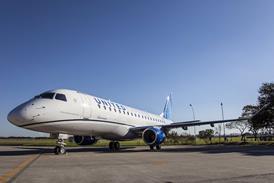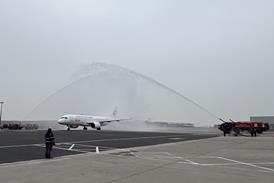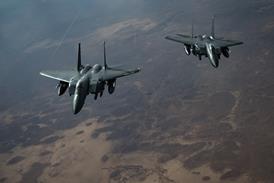Polish start-up Metal Master has begun ground testing the first of two Flaris LAR 1 flight-test aircraft, and is preparing the five-seat, high-performance personal jet for its maiden sortie in the first quarter of 2018.
The company says it is working with the Polish Civil Aviation Authority, with which it is seeking to obtain S-1 experimental certification next year, before pursuing validation with the European Aviation Safety Agency under CS-23 regulations.
"This is an advanced aircraft, so the CAA is involved each step of the way," says Metal Master founder Rafal Ładziński. "S-1 approval should be achieved within 50 flying hours," he adds, "but CS-23 will take another two years and many more hours to secure."
The firm, based in Podgórzyn, southwest Poland, has wrapped up structural and static tests, and ground testing of the LAR-1's systems, including its engine, landing gear, navigation and hydraulics should be complete by the end of January. "We then hope to get the green light to begin flight testing," says Ładziński.
Once the certification campaign is under way, Metal Master will open the orderbook, and step up its marketing effort for the all-composite type. The company has resisted the temptation to build a customer base early, despite what Ładziński calls a "significant interest" in the programme, notably from owners and operators of piston-singles and twins, who are looking to move into a high-performance jet platform.
"We want to make sure we can deliver what we set out to do," he says. That is: "make a simple, compact high-speed personal jet, that is easy to fly".
The LAR-1 has a projected range of 1,000nm (1,850km) with four passengers, with a cruise speed of 410kt (760km/h). It has a maximum take-off weight of 1,500kg (3,300lb), and will be able to take off and land on grass airstrips and small runways with a length of less than 200m (650ft).
Priced at less than $2 million, the Williams International FJ33-5A-powered LAR-1 also features a Garmin G600 glass flightdeck, semi-elliptical, detachable wings and a safety parachute system installed in the nose.
Source: Flight International


























